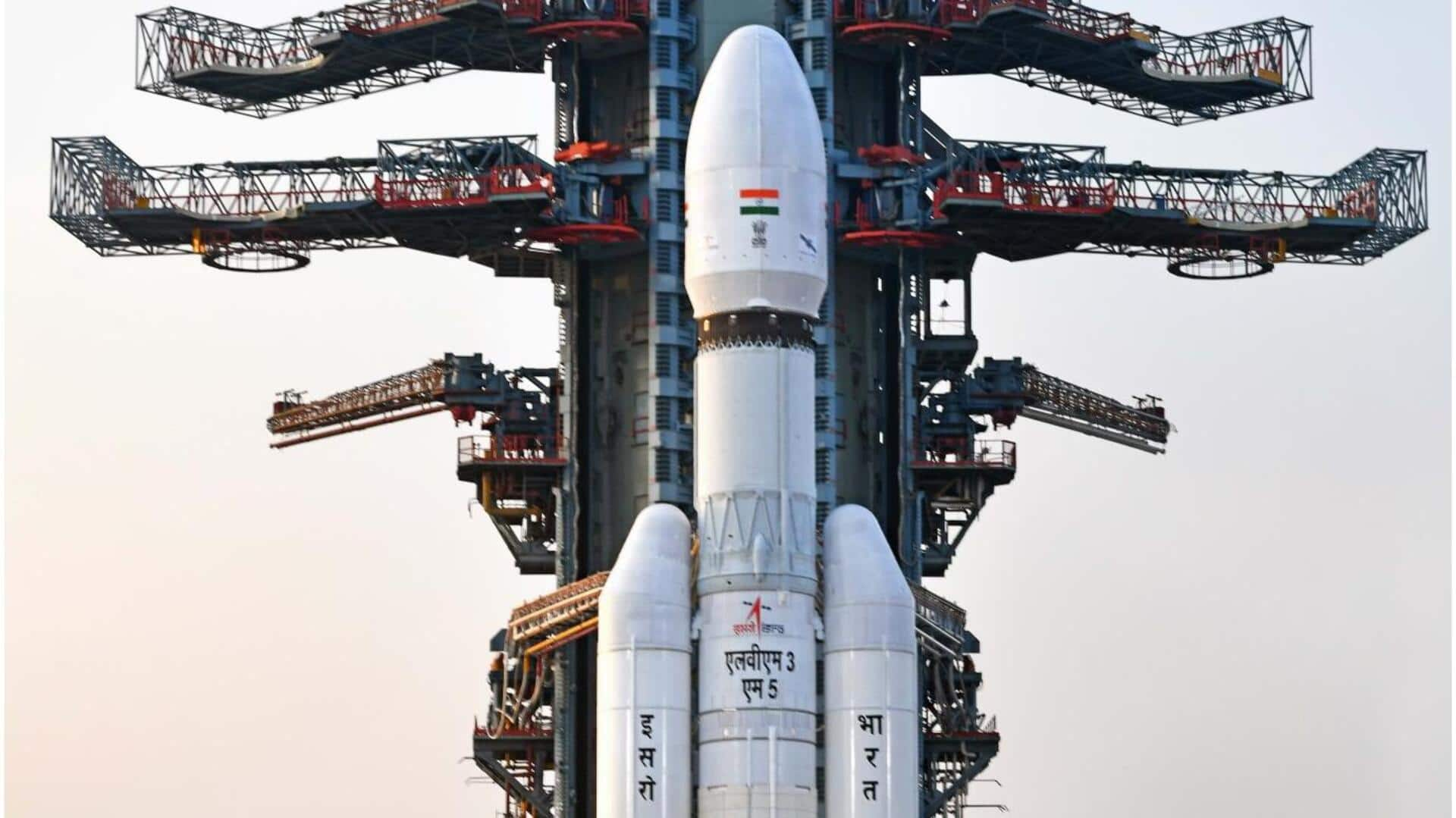
ISRO to launch its heaviest satellite from Indian soil today
What's the story
The Indian Space Research Organization (ISRO) is gearing up for the launch of its heaviest communication satellite to be launched from Indian soil, CMS-03. The mission will take place today at 5:26pm from the Satish Dhawan Space Center (SDSC) in Sriharikota. This will be the fifth operational flight of ISRO's Launch Vehicle Mark-3 (LVM3-M5), also known as GSLV Mk-3 or 'Bahubali' due to its heavy-lift capability.
Satellite details
CMS-03 will enhance secured communication for the defense sector
CMS-03, also known as GSAT-7R, is a multi-band communication satellite weighing 4,410kg. It will provide services over a wide oceanic region and the Indian landmass. The satellite has been specially designed for the Indian Navy to improve secured communication for the defense sector. This launch is part of India's efforts to enhance maritime connectivity and disaster response capabilities even in remote coastal locations.
Replacement mission
CMS-03 will replace GSAT-7 Rukmini satellite
CMS-03 will replace the GSAT-7 Rukmini satellite, which was launched in 2013. ISRO signed a ₹1,589 crore contract to develop this satellite for the navy in 2019. The launch of CMS-03 is significant as it will showcase India's growing prowess in high-capacity space communications aimed at improving communication coverage across India and surrounding oceanic regions.
Launch vehicle
About the LVM3-M5 rocket
The LVM3-M5 rocket, which will carry CMS-03 into space, is known for its reliability and capacity. It is crucial for many global satellite communication missions planned ahead. The three-stage launch vehicle has two solid motor strap-ons (S200), a liquid propellant core stage (L110), and a cryogenic stage (C25). This configuration gives ISRO full self-reliance in launching heavier communication satellites, typically weighing up to 4,000kg into Geosynchronous Transfer Orbit (GTO), although it can accommodate slightly heavier payloads as demonstrated by CMS-03.
Twitter Post
Check out the official post
Launch Day for #LVM3M5. India’s heavy-lift rocket launches #CMS03 today at 17:26 IST.
— ISRO (@isro) November 2, 2025
Youtube URL: https://t.co/gFKB0A1GJE
🗓️ 2 Nov 2025 (Sunday)
🕔 4:56 PM IST onwards
For more Information Visithttps://t.co/yfpU5OTEc5 pic.twitter.com/NB46ZT1Pwb